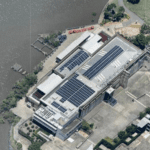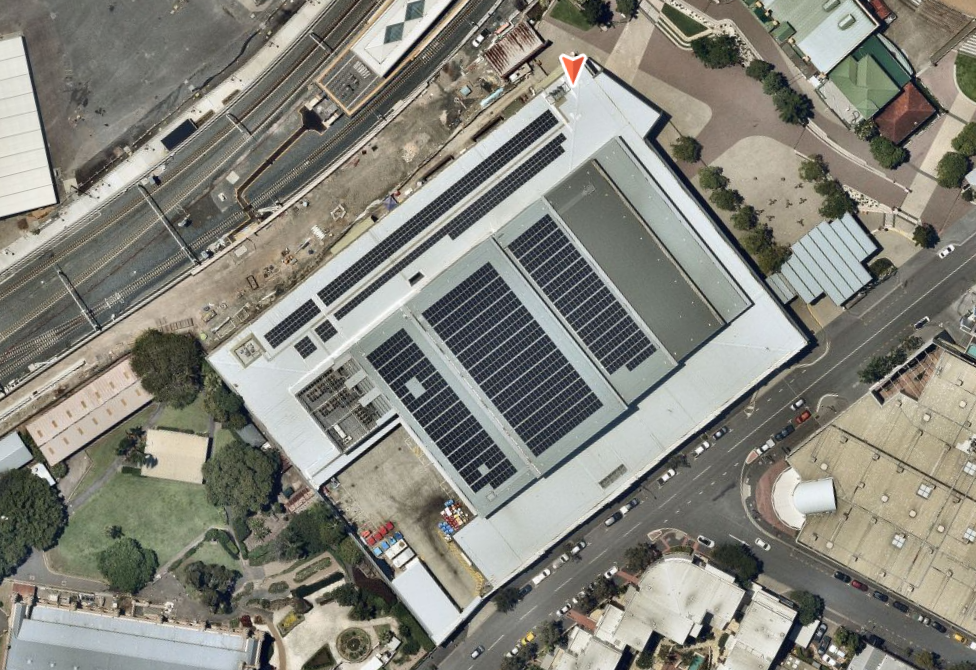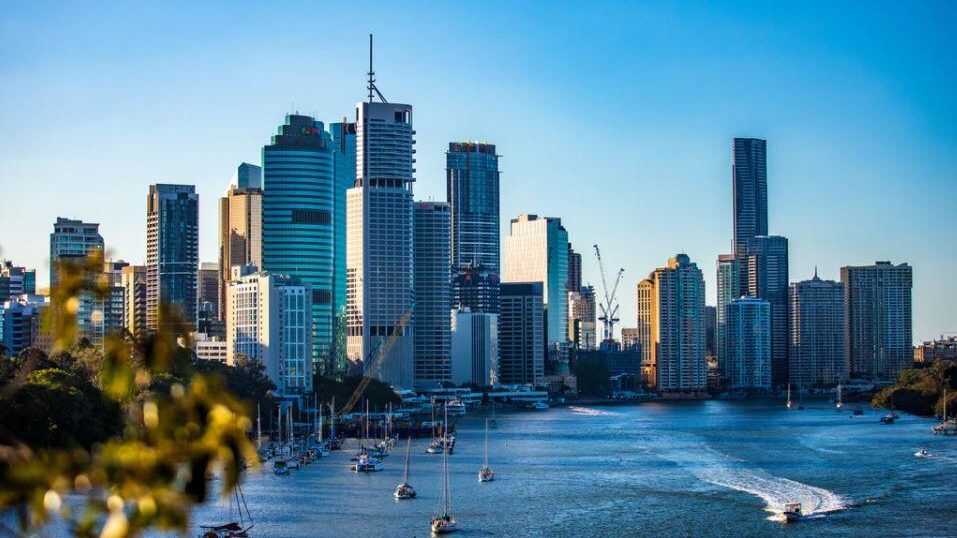Overview: Solar panel installations in Brisbane, QLD
- Brisbane Solar Installation Rates: Over 30% of homes in Brisbane have solar panels installed, making it one of the top Australian capital cities for solar energy usage.
- Excellent Solar Energy Potential: With an average of 5.2 peak sun hours per day, a 5kW solar system in Brisbane can generate about 19.5 kWh daily, significantly offsetting household electricity consumption.
- Cost-Effective Solar Installation: The average price for a 6.6kW solar system in Brisbane is approximately $5,210 after applying federal rebates, offering an affordable pathway to reduce long-term energy bills.
- Take Advantage of Federal Solar Rebates: Government incentives like Small-Scale Technology Certificates (STCs) can lower installation costs by about 30-40%.
- Rapid Payback and Significant Savings: Homeowners can expect a solar system payback period of 3 to 5 years, with potential annual savings reaching up to $3,000 by maximizing solar self-consumption and selecting favorable feed-in tariff rates.
- Consider Solar Battery Storage for Energy Independence: While the payback period for solar batteries is longer, adding battery storage can provide blackout protection during power outages and further reduce reliance on the grid.
Find out what you need to know before buying solar power in Brisbane below.
How much energy will solar panels produce in Brisbane?

Why install solar panels in Brisbane? Brisbane is known as the capital of the “Sunshine State,” and for a good reason. According to the Bureau of Meteorology, Brisbane gets about 5.2 hours of ‘peak sun’ per square meter on average per day. How much usable solar energy does 5.2 peak sun hours translate into? The answer depends on a few things, including the size (or kilowatt capacity) of your solar system.
The table below provides an overview of how much energy you can expect some common residential solar system sizes in Brisbane to generate, assuming that they are north-facing and about 75% efficient.
Energy generation for Solar Panels Brisbane | |||
| Solar system size Brisbane (kilowatts) | Number of Solar Panels | Avg daily system output (kilowatt-hours) | Annual Output (kilowatt-hours) |
| 3kW | 8 to 10 | 11.7 kWh | 4,271 kWh |
| 4kW | 11 to 13 | 15.6 kWh | 5,694 kWh |
| 5kW | 14 to 16 | 19.5 kWh | 7,117 kWh |
| 7kW | 19 to 22 | 27.3 kWh | 9,965 kWh |
| 10kW | 27 to 31 | 39 kWh | 14,235 kWh |
How to find the best solar system size for your home in Brisbane
When you look at your electricity bill, you should be able to see your energy usage listed in kilowatt-hours (kWh) – the standard units used in electricity billing. Your kWh consumption will vary by season and month. You should be able to figure out roughly how many kWh you use per day on average by looking at your old electricity bills. As a rule of thumb, the average Australian home uses between 15 and 25kWh of energy per day.
Knowing this number will help you choose the right solar system size, but because solar is so affordable these days, sizing your system is not an exact science. In fact, the most popular solar system size in Australia is 6.6kW thanks to the great value for money that they offer (i.e. a lower price per kilowatt). If you use significantly more than 25kWh of energy per day, a solar system larger than 6.6kW is probably worth investigating as well.
As the rate you buy power for in Australia is always higher than the rate you can sell solar power for – the more of the solar energy you ‘self-consume‘ (i.e. use directly) the better your financial return will be. The rate you are paid for your excess solar energy is generally referred to as a ‘feed-in tariff’. At present in Queensland, the rate you are paid depends on your electricity retailer and the plan you are on.
We encourage you to play with the numbers yourself using our Solar System Payback & ROI Estimator tool. You can also read on to the bottom of this article to see a quick comparison of returns on typical residential solar panel systems in Brisbane.
In Brisbane you can receive the STC rebate for Zone 3
The federal government rebate indirectly provides what are in effect up-front discounts on the cost of installing a solar PV system through the creation of small-scale technology certificates (STCs). As this incentive is applied directly to the price of your system by the installer, you do not need to claim it yourself; all you need to do is compare out-of-pocket solar system prices. You can find out how many certificates your system will generate with the Clean Energy Regulator’s calculator.
The actual value of the incentive depends on a number of factors such as location and system size, but usually works out to be about 30-40% of the total installation cost. This incentive has been key in making Australia home to some of the lowest solar PV system prices in the world.
As an example, when this incentive is applied to a 6.6kW solar system in Brisbane, it results in a reduction of $1,944 based on the project generating 54 certificates at a current certificate price of $36.
Compare quotes from up to 7 installers in your area now.
How much do solar panels cost in Brisbane?
Based on the data from February 2025 – the average cost of a typical 6.6kW solar panel system in Brisbane is $5,210 after the STC rebate has been deducted.
As mentioned above, Australian solar system installation prices are among the lowest in the world – we know this because we’ve been keeping track for a few years now with our monthly Solar Choice Price Index. We average out the prices of all the installers in our network to provide an accurate average cost. You can use our free comparison portal to browse through solar quote information from installers in your area.
Average solar panel installation prices based on Solar Choice Price Index
| Dec-25 | 3kW | 4kW | 5kW | 6kW | 7kW | 10kW |
|---|---|---|---|---|---|---|
| Brisbane, QLD | $3,910 | $4,420 | $4,820 | $5,300 | $6,220 | $8,250 |
As you can see in the below diagram, solar prices in Brisbane and the rest of Australia have plummeted over the last decade.
Compare quotes from local QLD solar installers now.
Are solar panels worth it in Brisbane?
The short answer is yes – solar panels can offer a typical Brisbane solar panels customer savings of up to $3,000 per year with a payback period of 3 to 5 years.
The below table illustrates some scenarios of typical Brisbane households where the larger solar panel sizes are matched to larger energy usage. Note that the calculations in the table rely heavily on the ‘self-consumption rate’ which estimates the proportion of solar power that will be used within the home rather than being sold back to the grid. A rate of 40% would suggest a reasonable amount of usage during the daytime.
Note that the pricing here is average costs only. You can browse through solar quotes in Brisbane on our free comparison tool if you want to see specific brands and a list of possible extras that may occur for your installation.
| Indicative Returns for solar panels in Brisbane -Updated February 2025- | |||||
| Solar Panel Size | Average Solar Cost | Average Daily Energy Usage QLD | Self Consumption Rate | Annual Savings | Solar System Payback Period |
| 5kW | $4,780 | 15 kWh | 40% | $1,026 | 4.6 Years |
| 6.6kW | $5,210 | 20 kWh | 40% | $1,363 | 3.8 Years |
| 10kW | $8,200 | 30 kWh | 40% | $2,052 | 3.9 Years |
| 15kW | $12,300 | 45 kWh | 40% | $2,873 | 4.2 Years |
Assumptions
- Assumes an energy price of 31c / kWh which is towards the middle of what is offered in Brisbane
- Assumes a solar feed-in tariff of 6c / kWh
- Average costs come from the Solar Choice Price Index for February 2025 and include the STC rebate and GST
- Your self-consumption rate will vary depending on how you use power in your home
Use our solar payback calculator to work out the return for your own specific details in Brisbane
Is solar battery storage worth it in Brisbane?
The return on investment for solar batteries in Brisbane is currently lower than the return for solar panels. This is mainly due to the fact that the cost of solar batteries is comparatively much higher and there in no rebate available for battery storage in Queensland or federally across Australia.
Solar Choice has been analysing and tracking the financial viability of household solar battery storage for over 5 years in our ‘Are solar batteries worth it?‘ article. We look at three common use cases, along with typical inputs for energy prices, feed-in tariffs and battery installation costs to assess the financial return as described in the table below: We will say that for Brisbane residents, solar batteries offer the added benefit of providing energy independence during power outages, which can be particularly useful during those summer storms or grid failures. Installing solar panels with solar battery storage ensures you can maximize your self-consumption of solar energy, further reducing reliance on the grid and lowering electricity costs.
We look at three common use cases, along with typical inputs for energy prices, feed-in tariffs and battery installation costs to assess the financial return as described in the table below:
| User Case | Solar and Battery Solution | Total Year 1 Savings | Payback Period Solar & Battery | Payback Period Battery Only |
| Young Adults / Older Family | 5kW of Solar Panels and a 3.5 kWh battery | $1,160 | 9.1 years | > 20 years |
| Retirees / Young families | 6.6kW of Solar Panels and a 6.5 kWh battery | $1,846 | 7.7 years | 18.9 years |
| Big Energy User | 13 kW of Solar Panels and a 13.5 kWh battery | $3,233 | 8.1 years | > 20 years |
Assumptions
- We have used energy rates and feed-in tariffs towards the sharper end of what’s available on the market using EnergyMadeEasy
- Pricing is based on the Solar Choice Price Index from February 2025
Despite the long payback period, we are still seeing many homeowners installing battery systems. There are non-financial reasons that are becoming increasingly important including keeping the lights on during a blackout and reducing carbon footprints.
Many others are installing ‘battery ready’ systems which include a hybrid solar inverter allowing them to choose from a greater selection of batteries once they become more affordable – or if a government rebates scheme comes into play.
We will say that for Brisbane residents, solar batteries offer the added benefit of providing black-out protection during power outages, which can be particularly useful during those summer storms or grid failures. Installing solar panels with solar battery storage ensures you can maximize your self-consumption of solar energy, further reducing reliance on the grid and lowering electricity costs.
Compare quotes from up to 7 pre-vetted installers in your area now.
Since 2008 our knowledge and sophisticated software has allowed over 160,000 Australian households and businesses to make a well-informed choice on their solar & battery installer.
Looking for the best solar panels in Brisbane? Whether you’re considering solar installation in Brisbane for the first time or upgrading your existing system, Solar Choice helps you compare the top installers in QLD, understand solar panel pricing, and estimate your potential savings on a complete solar system setup.
Case Study: Solar panel installation at Brisbane Showgrounds
Solar Choice was engaged by a working group at RNA to develop a solar business case and manage a tender process for installation of a 600kW solar system.
The winning tenderer installed 1112 Longi Solar panels and 4 x 110kW Sungrow inverters, which is expected to product 948,835 kWh of renewable energy in the first year.
The system is expected to save over $100,000 a year and will offset 16,000 tonnes of CO2 emissions during its life.

FAQs
How many houses have solar panels in Brisbane?
Can I install solar panels on my house in Brisbane?
What direction should solar panels face in Brisbane?
Is solar worth it in Brisbane?
How many solar panels do I need in Brisbane?
Which energy company is best for solar in QLD?
Is there a solar rebate in QLD?
How much does a 6.6 kW solar system cost in QLD?
- Running Cost of Air Conditioners – Explained - 7 October, 2025
- Air Conditioner Rebate South Australia: What You Need to Know - 19 September, 2025
- Air Conditioner Rebates in Queensland: What You Need to Know - 19 September, 2025

HI Solar Choice,
Can you update your Indicative Return table for Solar Systems in Brisbane to latest costs/ROI as its likely to have changed since April 2016?
Thanks.
Hi Tim,
Will look into it today. Thanks for the message.
Hi, Sorry to but in on a personal request! I am trying to contact Jeremy Moore(Dr) I used to work with him the Uk (Norwich) and he was a friend of mine who I have lost touch with, Could I ask anyone who has contact with him to please pass on my email address and ask him to ping me an email. Thanks Guys Ian (Norbut) sadler.
Hi my wife and I are considering solar. A rundown on price for standard house and what to expect would be great. I have read they no longer offer anything for solar transferred back into the grid is this true? Thanks in advance
Hi Luke,
Thank you for your comment.
You can refer to our PV Estimator for system sizing a payback http://www.solarchoice.net.au/blog/solar-pv-solar-system-sizing-tool
If you would like to see the installers offerings in your area, simply fill in the form on our home page to receive a quote comparison with a full break down of products, warranties and indicative cost
What are your recommendations regarding APS Poly Panels??
Thanks
Hi Erika,
No thoughts on these panels as of yet, but some other readers may have opinions on them – which they’re welcome to share in comments here.
Hello,
we are look for a quote for the following please.
110 x 80W Mono crystalline solar Panels
20 X 45A Solar Regulators
40 x 265 AH Deep cycle batteries
20 x 1500W 12-24VDC – 240VAC solar inverters
We are after good quality at a good price please.
Hi Shawn,
The best way to get quotes from us is to fill out the Solar Quote Comparison request form to the right of this page. By doing so, you’ll be able to see a range of quotes from installers in your area, and elect which one’s you’d like to be in touch with.
For an accredited Grid Connect & Design/Install/Commissioning person/company (or the system owner?) to qualify/get partially reimbursed, via the STC scheme, is it necessary for the panels to be approved here in Australia/or be on a more International approved list?
I am dissatisfied that Australians/Queenslanders and more particularly those of us in the North are deprived of panels like those available to Sunpower customers in the USA and Europe! (>21% “X21-345”)
(EG. If I qualify, in Townsville, can I import panels that are not available on the Australian market and get STC credits? I am a former Ford Motor Company Solar Car Engineer, in Solar since 1987!)
Hi Dr Moore,
Provided the modules are on the CEC’s ‘approved’ list, as is the installer you choose to do the job, then you should still be eligible to receive the STC incentive for your system.
I wish to add additional panels-in Brisbane…..
Where can i locate a history of solar radiation occurring at 12pm each day of the year in Brisbane……
Having this information ,how can I convert that information into kw produced by 10 panels of 240w each
This information will help me determine how many panels i can add but still have my inverter operate most of the time within its maximum capability…..
With additional panels I will exceed the peak inverter capacity but hopefully not so often that the upgrade is inefficient
Changing my inverter would cause me to loose my 52 cents/kw rebate that I am on
I wish to extend the bell curve shoulders of production without significantly increasing the peak based on my current knowledge of my system at midday.
Hi Jed,
The Bureau of Meteorology has data that should suit your purposes. You can check into it here.
Can panels b moved from one side of house to another part of roof , if so at what cost & will there b any damage to tiles
Hi Wayne,
What you’ve described is certainly possible (and can most likely be done without damaging the tiles)- but you’d probably want to get a certified installer to do the job for you. One organisation we know of that specialises in dealing with post-installation work is SolarSafe. You can read about what they offer in this article, but you’d have to ask them directly about their rates.
Hello,
I am wondering if it is possible give me a review about different Solar manufactures? Like Trina, Winacio, Canadian Solar, SMA, Aurora, etc. Mainly the big named brands. Also if you would have any rest results, what type of cells they use, what materials it’s made out of, and where they are manufactured.
Thank you.
Hi Crest. There are different ways to assess solar panel & inverter quality, and different organisations have different ways of doing so. We know all of the companies that you mention to be reputable. We’ll see what we can do about putting together a more comprehensive analysis.